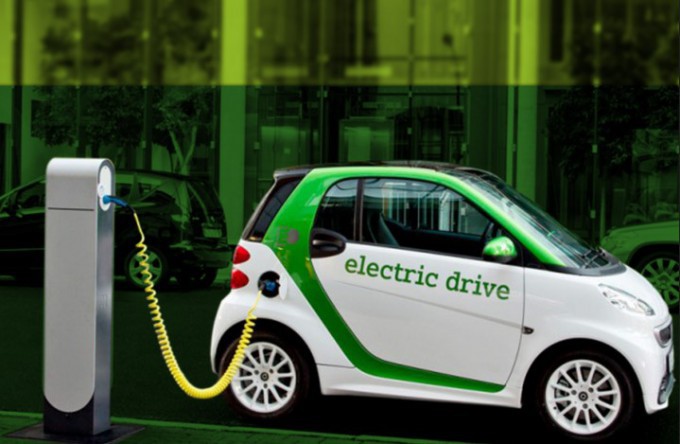Understanding Electric Vehicles: The Basics
Electric vehicles (EVs) represent a significant advancement in automotive technology, operating primarily using electricity rather than traditional fossil fuels. At their core, EVs are powered by electric motors that draw energy from rechargeable battery packs. The battery technology employed in modern electric cars, typically lithium-ion, has evolved considerably over recent years, leading to improved efficiency, performance, and longevity. These vehicles are often charged via standard electrical outlets or dedicated charging stations, allowing for both home and public recharging solutions.
One of the most prominent advantages of electric vehicles is their potential to reduce greenhouse gas emissions compared to conventional internal combustion engine (ICE) vehicles. Since EVs do not emit exhaust gases during operation, they provide a cleaner alternative, particularly when charged using renewable energy sources such as solar or wind power. This aspect contributes to the growing perception of electric vehicles as environmentally friendly choices, appealing to consumers who are increasingly concerned about climate change and air quality.
While the environmental benefits of electric vehicles are significant, it is essential to consider the entire lifecycle of the vehicle, from manufacturing to disposal. The production of electric vehicle batteries involves mining and processing materials like lithium, cobalt, and nickel, which can have detrimental effects on ecosystems and local communities. Moreover, depending on the energy mix used for electricity generation in different regions, the carbon footprint of charging EVs can vary widely. Understanding these complexities is crucial in assessing the overall ecological advantages of electric vehicles and debunking myths surrounding their sustainability and green credentials.
The Environmental Impact of EV Production
The production of electric vehicles (EVs) has sparked considerable interest regarding its environmental impact, particularly in light of the materials required for battery manufacture. The primary components of most electric vehicle batteries include lithium, cobalt, and nickel—metals that necessitate extensive mining operations. The extraction of these materials typically involves significant ecological disturbances, such as habitat destruction and water contamination, raising questions about the sustainability of sourcing them in large quantities.
For instance, lithium extraction primarily occurs in regions like Argentina, Bolivia, and Chile, often involving the depletion of vital freshwater sources. Cobalt, predominantly sourced from the Democratic Republic of the Congo, poses ethical concerns due to child labor and hazardous working conditions. Nickel mining, essential for high-performance battery systems, can also lead to extensive environmental degradation if not conducted responsibly. Each of these processes contributes to a larger sustainability dilemma surrounding electric vehicle production.
Energy consumption during the manufacturing of EVs is another critical aspect to consider. Studies indicate that producing an electric vehicle can consume more energy than creating a conventional gasoline-powered car. However, it is essential to recognize that while the initial manufacturing footprint may be higher, the reduced emissions from EVs during their lifespan may offset this disadvantage. Moreover, the shift towards renewable energy sources, such as solar and wind, for electricity generation in the production process can mitigate the carbon footprint of manufacturing electric vehicles.
When evaluating the environmental impact of electric vehicle production, it is vital to acknowledge the complexities and trade-offs inherent in both electric and traditional vehicle manufacturing. As technology continues to evolve, improvements in mining practices, battery chemistry, and energy use could further enhance the sustainability of electric vehicles, making them a viable option toward reducing overall greenhouse gas emissions.
Energy Sources and Charging Infrastructure: Are They Truly Green?
The environmental impact of electric vehicles (EVs) extends far beyond their emissions while driving; it significantly hinges on the energy sources employed for charging these vehicles. In many regions, the energy mix includes a combination of coal, natural gas, and renewable resources such as wind and solar power. This mixture directly influences the overall carbon footprint of EVs, with variations in emissions based on local energy policies and infrastructure.
For instance, areas heavily reliant on coal for electricity generation will likely see a higher carbon footprint associated with EV usage compared to regions that emphasize renewable energy. This scenario introduces an important consideration: the sustainability of electric vehicles is not just about the vehicles themselves but also about the sources powering them. As such, the greenness of an electric car can vary significantly depending on the location and the existing utility grid, which can include a higher share of fossil fuels.
The role of charging infrastructure must also be considered when evaluating the environmental implications of EVs. While many consumers may charge their vehicles at home, public charging stations are vital in supporting the adoption of electric vehicles. The availability and accessibility of these chargers can spearhead a transition towards greener energy solutions. The development of charging stations powered by renewable energy further complements the push for sustainability, enabling EV owners to reduce their dependence on fossil fuel-generated electricity.
As the demand for electric cars grows, so does the necessity for transitioning the energy grid towards renewable sources. Policymakers and industry stakeholders are critically examining how to bolster this shift towards green energy, ensuring that the potential environmental benefits of electric vehicles are not undermined by the carbon footprint of the energy used to charge them. Understanding the impacts of energy sourcing and charging infrastructure is essential in addressing the myths surrounding the complete greenness of electric vehicles.
The End-of-Life Challenge: Recycling and Disposal of EV Batteries
The end-of-life management of electric vehicle (EV) batteries presents a significant challenge that is critical to assessing whether electric cars truly uphold their green claims. As EV adoption increases, the volume of batteries reaching the end of their life cycle is also expected to rise significantly over the coming years. Presently, the recycling process for lithium-ion batteries, which are predominant in EVs, involves several steps including collection, dismantling, and processing. However, the current recycling rates for these batteries remain relatively low, which raises concerns about potential environmental risks.
If not properly managed, end-of-life batteries can create considerable environmental hazards. The chemicals present in batteries, including heavy metals, can leach into soil and waterways if batteries are disposed of in landfills. Moreover, improper handling may pose safety risks, including fire hazards from lithium-ion cells. It is imperative that industries and governments work together to establish comprehensive strategies for battery disposal and recycling to mitigate these risks and safeguard environmental health.
Innovation in battery design is also pivotal to enhancing sustainability in the lifecycle of EVs. Many manufacturers are increasingly focusing on creating batteries that are easier to recycle and that utilize more environmentally friendly materials. Some emerging technologies promise to facilitate the recovery of valuable materials from depleted batteries, contributing to a circular economy model. This model not only minimizes waste but also reduces the demand for virgin materials, which can have their own ecological footprints.
Ultimately, the effectiveness of these recycling practices and innovations will determine whether the end-of-life management of EV batteries aligns with the overall green image of electric vehicles. The transition to a sustainable vehicle ecosystem requires collaborative efforts across various sectors, thus reinforcing the importance of responsible battery management as electric cars become more prevalent in today’s automotive landscape.


No responses yet